I’ve been bowhunting turkeys for 17 years now. In addition to bow-bagging dozens myself, I’ve shared many successful hunts with others, and I’ve even mentored a few folks to their first archery turkeys. I’m not boasting, just pointing out that I’ve seen it all. I’ve watched arrows whizz past toms. I’ve seen arrows dump them on the spot. I’ve seen arrowed turkeys take flight. And, I’ve witnessed everything in between.
Make no mistake, shooting turkeys with a bow and recovering them quickly isn’t always how it goes. A turkey’s softball-sized vitals are difficult to hit, and if you miss them, you’ll likely be faced with floating feathers and a perplexing tracking mission. Following up wounded turkeys can be very difficult, plus it’s a disgusting feeling, especially if the opportunity should’ve been a slam dunk in the first place.
That’s why I want to share six steps you can follow to increase your accuracy when a big bird struts next to your decoys. Let’s take a closer look at how to kill a turkey with a bow.
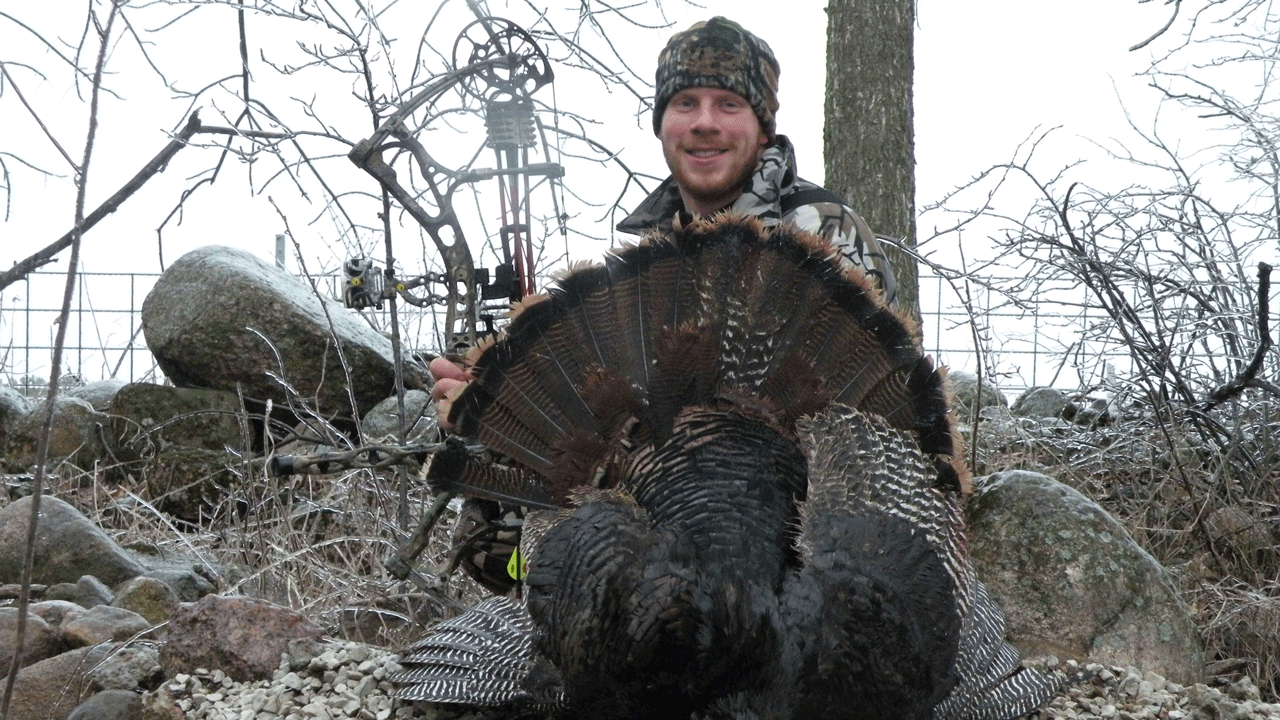
Bowhunting turkeys can be a fun and rewarding experience if you’re properly prepared. The info below will help you make it happen.
Put the Decoys Closer
In the shuffle of setting up on a gobbling bird, it’s easy to place decoys in a poor spot or too far away. I don’t care how good your shooting skills are; there’s no sense in making a small target smaller. Put decoys at slam-dunk range and where you can comfortably shoot to them.
For distance, I place my decoys at 15 yards if hunting without a blind. When hunting from a ground blind, I like them even closer since I’m not worried about getting drawn. About 8-10 yards is money. I can and have killed toms much, much farther, but why put decoys at 25 yards when you can put them at 10 yards? I want to orchestrate a shot opportunity I can’t screw up.
Placing decoys at 10 yards or closer, however, can cause accuracy problems. Don’t worry. I’ll address that in step 5.
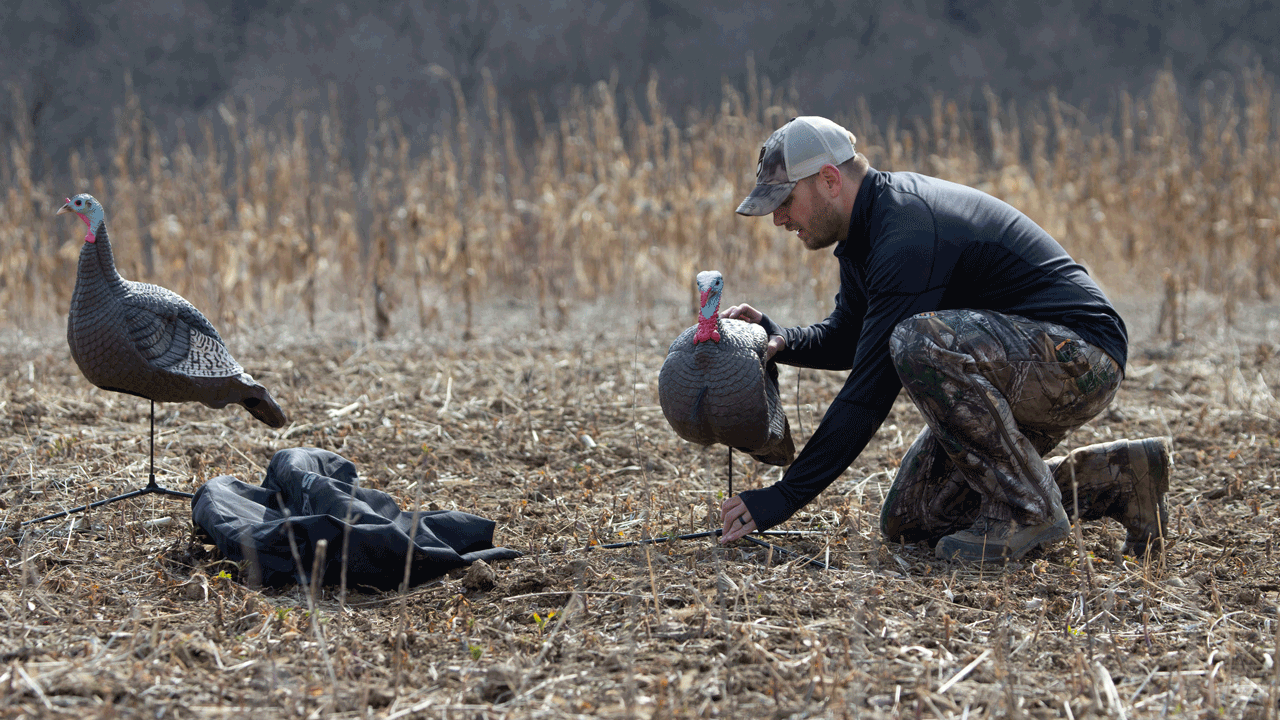
Keep your decoys close for optimal shot opportunities.
Pick a Feather
A strutting tom is deceivingly huge. Take away all those feathers and little is left. Take the large breast meat away and there’s less yet. For that reason, aiming small is a chief factor in placing your arrow perfectly.
I made the mistake multiple times early in my turkey-hunting days (and a handful of times since) where I aimed at the bird and not for a specific spot. It’s possible to get lucky and pinwheel a gobbler, but more often a lack of aiming yields a run-away or fly-away result. It’s the biggest hero-to-zero moment you’ll ever experience in the turkey woods.
Again, turkey kill zones are small targets, which is why you must not throw your pin center mass and cut an arrow loose. Instead, study this Turkey Shot Placement article from our friends at Mathews. Know where the vitals are and then aim small. This brings us to another important consideration to the aiming equation.
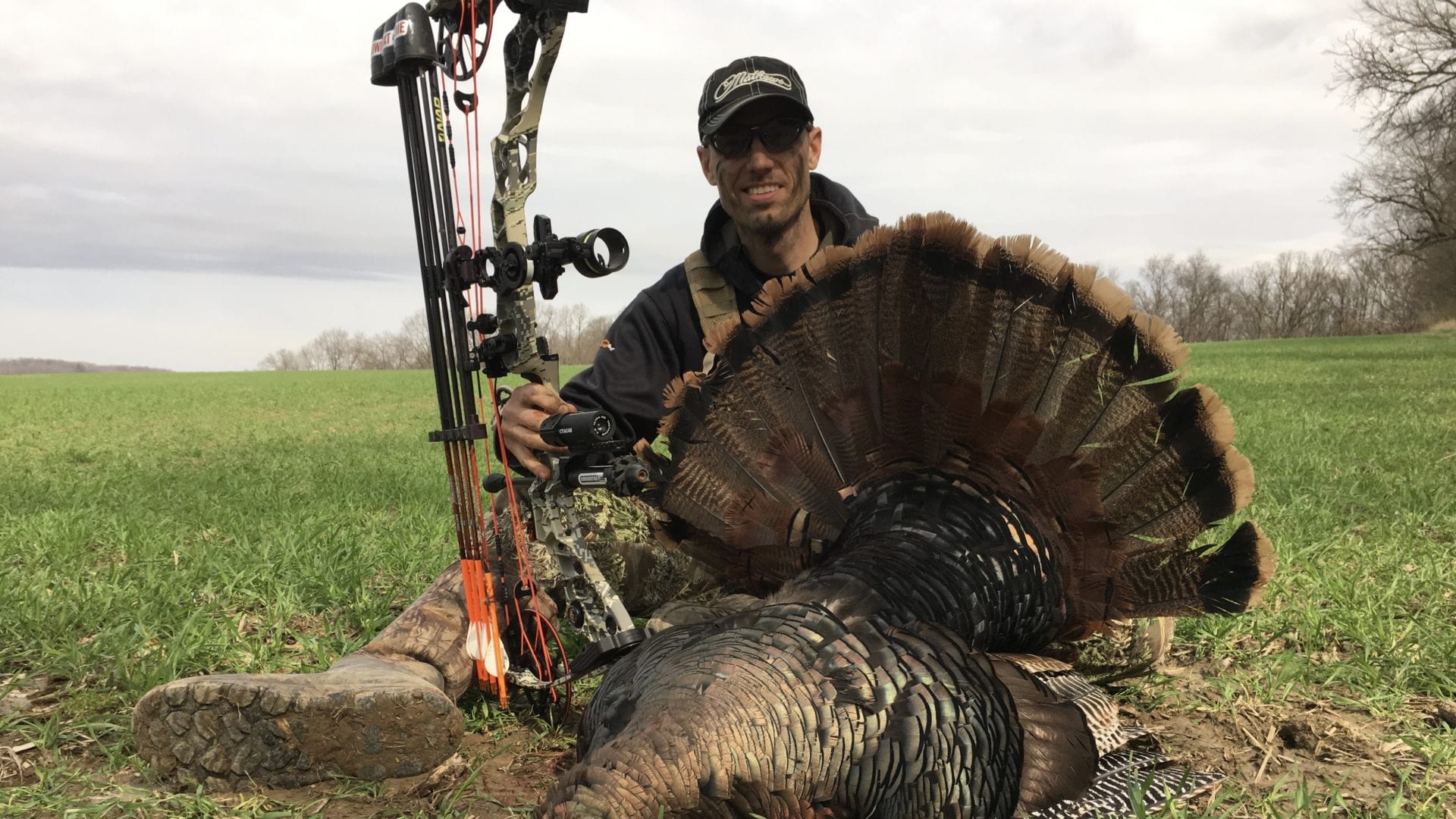
Turkeys can be tough. Be sure to pick a feather when you’re making the shot.
Know the Angle
Unlike a whitetail, a gobbler can be ethically arrowed at any angle with a good bow-arrow-broadhead combination. The problem is that a strutting gobbler and his ever-shifting fan can portray deceiving poses. As a result, folks tend to aim toward the center of the bird, which can sometimes net a nothing-but-breast hit. Recovering a breast-hit bird is rare.
Again, refer to the Turkey Shot Placement article. Take an extra second or two to determine the exact angle at which the bird is standing, and then visualize where the vitals are in relation to that angle. Don’t shoot until you do that. You’ll make better shots.
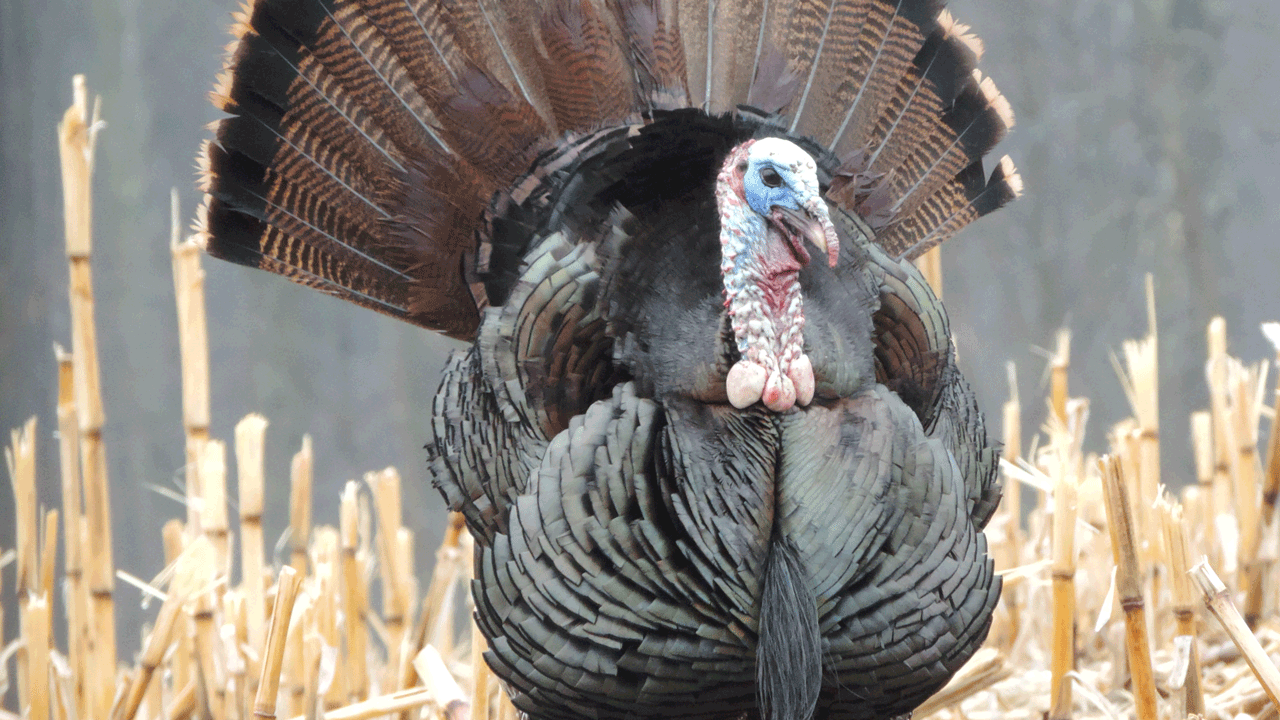
Your target varies depending on which way the turkey is facing. Watch your shot angles or you’ll go home empty handed every time.
Slow Down
I can’t count how many turkey hunts I’ve been involved with where the hunter (sometimes it was me) took the shot as soon as the tom arrived in the decoys. If you’ve been following him with your pin the entire way in and have it locked on the vitals, then no problem. However, some folks shoot fast because of the excitement the situation generates. A gobbling, spitting-and-drumming and decoy-pummeling bird creates a false sense of urgency to shoot. In reality, if he’s bought your decoy setup, you practically have all the time in the world. Slow down and take your time.
The other thing I’ve noticed — particularly while using a jake decoy — is that toms coming in for a fight will maul and jump all over the decoy in an epic blur of feathers. Each time they pause, it becomes tempting to shoot right away, but it’s wiser to let them calm down a bit before you attempt the shot. Shooting at a rapidly moving gobbler can easily yield a poor hit or a miss.
Don’t shoot until everything feels right and the bird is holding still. Breathe deeply, focus on the shot and remember: it’s just a bird. Settle down, slow down and make it count.
Practice at Close Range
As I said earlier, we’ll now address the matter of shooting at turkeys at less than 10 yards. Too many bowhunters (I’ve done it in the past, too) use their top pin when a bird comes in close. What results is often a low breast hit. I even know a guy who missed a turkey entirely at 2 yards. At that close range, your arrow doesn’t reach a trajectory that corresponds with your top pin (every bow setup varies).
So as funny as it sounds, you’ll have to practice at distances from 2 to 10 yards and find out where to hold. I aim with my 50-yard pin when birds are 2-5 yards away to hit the mark.
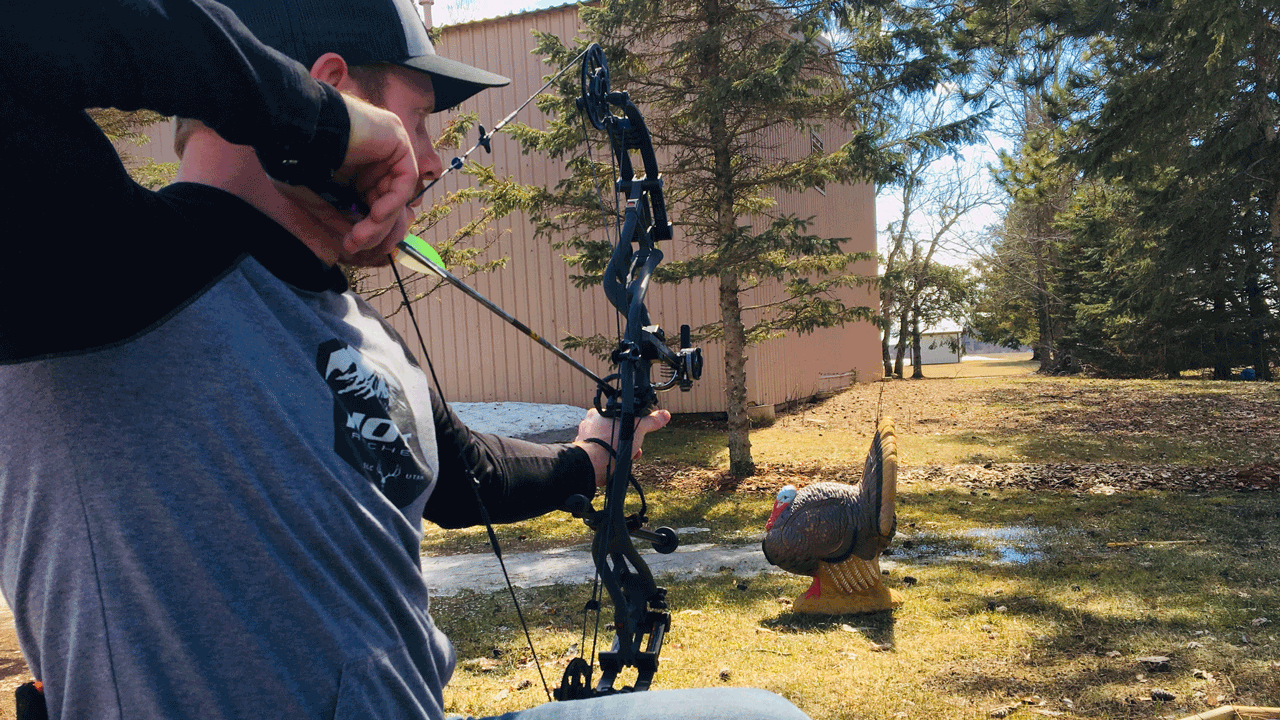
Practicing at 3 yards? You bet! The author advocates that every bowhunter practices at 2-10 yards to know how to aim at such distances. At 3 yards, the author uses his 50-yard pin to hit where he’s aiming.
Practice Like You Hunt
You’re setting up to fail if you don’t take some practice shots while kneeling or sitting in a ground blind or sitting up against a tree if you hunt without a blind. Shooting from foreign positions or with a facemask is different than typical backyard practice. It’s very important to set up just like you will while hunting and test your shooting skills. It can help you identify flaws or problems before you hunt rather than during your hunt.
How to Kill a Turkey with a Bow – Conclusion
I can’t stand the thought of botching an easy shot or wounding a perfectly good gobbler, so I incorporate these steps every time I hunt. My deadliness has majorly increased. Follow them this spring, and I bet yours will, too.

 By
By 



